at Vs+ = 3 V,
Vs– = GND, Vocm is open, 50-Ω single-ended input to differential output, gain = 2
V/V, Rload = 500 Ω, and TA ≈ 25°C (unless otherwise noted)
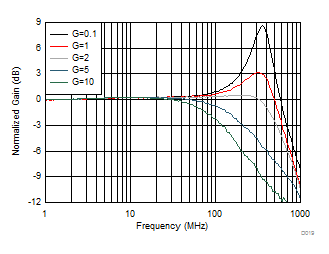 Figure 6-19 Small-Signal Frequency Response vs Gain
Figure 6-19 Small-Signal Frequency Response vs Gain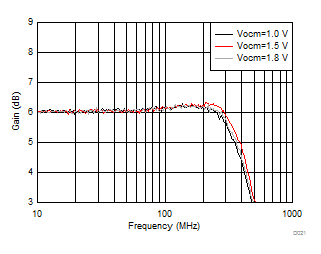
| Vout
= 100 mVPP, see Figure 7-1 with Vocm adjusted |
Figure 6-21 Small-Signal Frequency response vs Vocm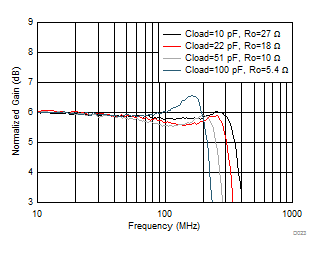
| 100
mVPP at load, Av = 2 (see Figure 7-11), two series Ro added at output before Cload |
Figure 6-23 Small-Signal Frequency Response vs Cload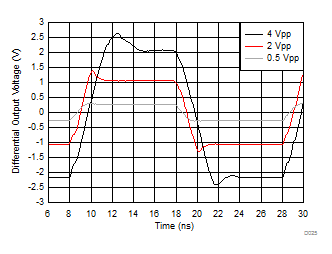
| 50-MHz input, 0.3-ns input edge rate, single-ended
input to differential output, DC coupled, see Figure 7-3 |
Figure 6-25 Small- and Large-Signal Step Response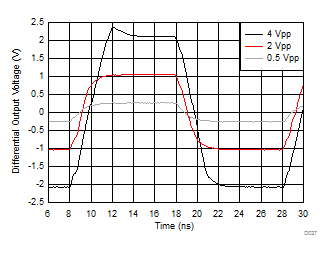
| G =
5 V/V, 50-MHz input, 0.3-ns input edge rate,
single-ended input to differential output, see Figure 7-3 |
Figure 6-27 Small- and Large-Signal Step Response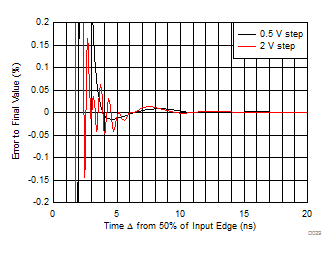
Simulated with 2-ns input transition time,
see Figure 7-3 |
|
|
|
Figure 6-29 Small- and Large-Signal Step Settling Time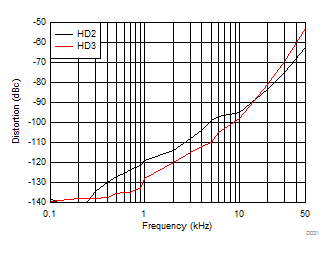
| 2-VPP output, see Figure 7-1 with Vs+ = 3 V, Vocm = 1.5 V |
Figure 6-31 Harmonic Distortion Over Frequency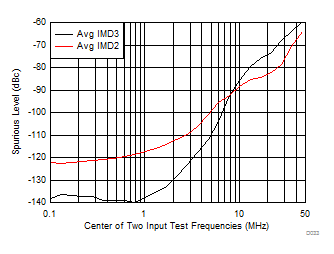
| 1
VPP each tone, see Figure 7-1 with Vs+ = 3 V, Vocm = 1.5 V |
Figure 6-33 IMD2 and IM3 Over Frequency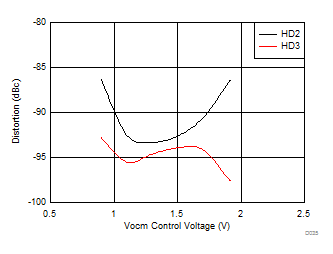
f =
10 MHz, 2-VPP output,
ee Figure 7-3 with Vocm adjusted |
|
Figure 6-35 Harmonic Distortion vs Vocm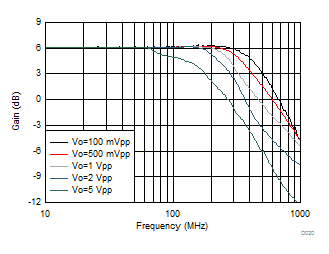 Figure 6-20 Frequency Response vs Vopp
Figure 6-20 Frequency Response vs Vopp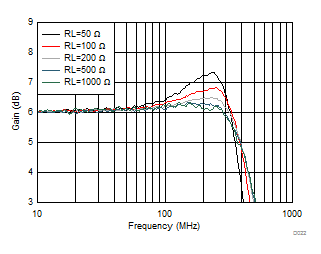
| Vout
= 100 mVPP, see Figure 7-1 with the Rload adjusted |
Figure 6-22 Small-Signal Frequency Response vs Rload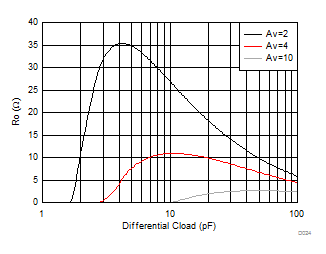 Figure 6-24 Recommended Ro vs Cload
Figure 6-24 Recommended Ro vs Cload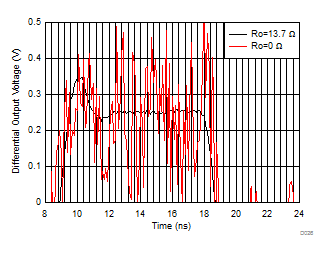
500-mVPP output into 22-pF Cload, see
Figure 7-11
with Vs+ = 3 V and Vocm =
1.5 V |
Figure 6-26 Step
Response Into Capacitive Load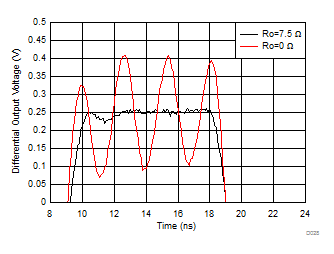 Figure 6-28 Step Response into Capacitive Load
Figure 6-28 Step Response into Capacitive Load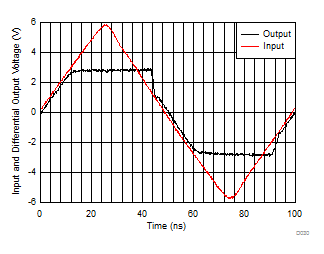
Single-ended to differential gain of 2 (see Figure 7-3),
> 2 × input
overdrive |
Figure 6-30 Overdrive Recovery Performance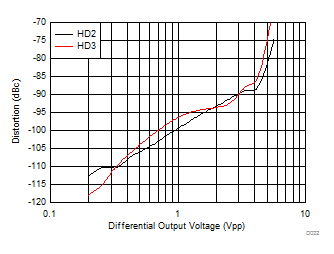
| f =
10 MHz, see Figure 7-1 with Vs+ = 3 V, Vocm = 1.5 V |
Figure 6-32 Harmonic Distortion vs Output Swing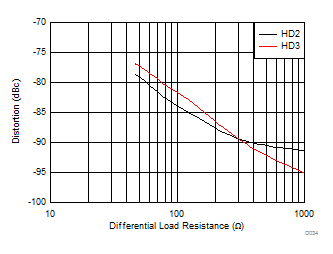
| f =
10 MHz, see Figure 7-1 with Vs+ = 3 V, Vocm = 1.5 V |
Figure 6-34 Harmonic Distortion vs Rload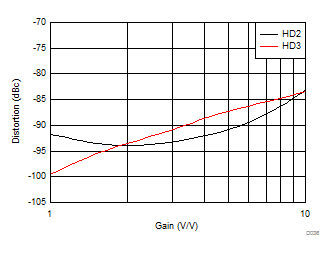 Figure 6-36 Harmonic Distortion vs Gain
Figure 6-36 Harmonic Distortion vs Gain

















